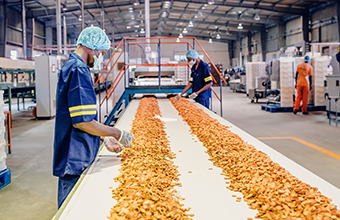Adapting to New Work Dynamics
The office sector, long under scrutiny amid evolving work preferences and economic shifts, is undergoing an unprecedented and transformative phase, reshaping dynamics “within the walls.” Pre-pandemic, companies were more commonly in open layouts with minimal private space. However, since the pandemic’s onset, a seismic shift has occurred, veering away from open office styles toward a more balanced 50/50 plan, integrating offices, huddle rooms, and expansive open spaces.
Amid challenging market headlines, Atlanta’s office sector remains resilient. While remote work continues, companies are taking a longer look at their workspace requirements, with some transitioning back to fully in-office setups to bolster productivity and foster team collaboration. Notably, UPS, the state’s largest public company, recently announced a mandatory return to in-office work five days a week, starting March 4. These emerging trends herald an anticipated surge in centralized workplace models, fueling the demand for collaborative, purpose-driven office spaces.
Closing out Q4 last year, the statistics in the Atlanta office market were indicative of this evolving landscape. Vacancy rates stood at 15.2%, with 8.8 million square feet of sublet space available. Rent averaged $28.44 per square foot, while construction activity decelerated, with only 2.8 million square feet under development. However, the market experienced a negative absorption rate, totaling 3,349,136 square feet, highlighting the ongoing recalibration and adaptation within the office sector.
Predictions for Office Spaces
Mixed-Use Developments:
Demand for mixed-use spaces will continue to increase. Locations like The Battery, Avalon, and Ponce City, where some of the most successful mixed-use office developments have been built, will be crucial. It is important to note for these types of locations that it is about what is going on in the mixed-use project, not just the office premises. For employees, the creation of spaces that have a mixed-use emphasis allows them to have a collaborative workplace feeling, whether it be in open areas or in huddle-room type offices. Specifically, bringing the idea of “coffee shop” style to the office has increased productivity, collaboration, and excitement among office workforces.
Furthermore, companies are continuing to promote in-person work – but the question executives are asking is “how can we accomplish this?” Decision-makers are now moving toward the idea that paying higher rental rates for better amenities and nicer spaces attracts their employees to want to return to the office versus staying at home. Companies will seek agile, adaptable office spaces to accommodate evolving work patterns, fostering collaboration and innovation.
Cost of Landlord Debt:
Interest rates have severely impacted the office market and will continue to do so because they have exposed the difference between well-capitalized landlords and those who are not. There are major concerns over the next 18 months regarding the impact of interest rates on landlords’ financial health. Specifically, the effects of this pressure on landlords are being seen now as landlords try to refinance the loans on properties and on tenant and capital improvements for the buildings. This coincides with a growing list of buildings that are on their lenders’ watch list or already in special servicing. During this uncertain time in the real estate cycle, it is more important than ever for companies to engage representation to understand where there are risks, explore the proper protections, and creatively use leverage to minimize occupancy costs.



